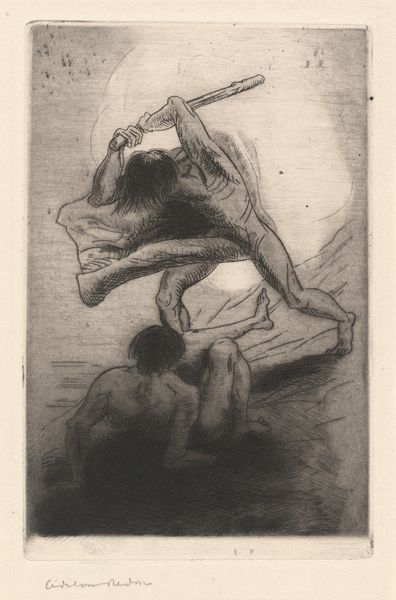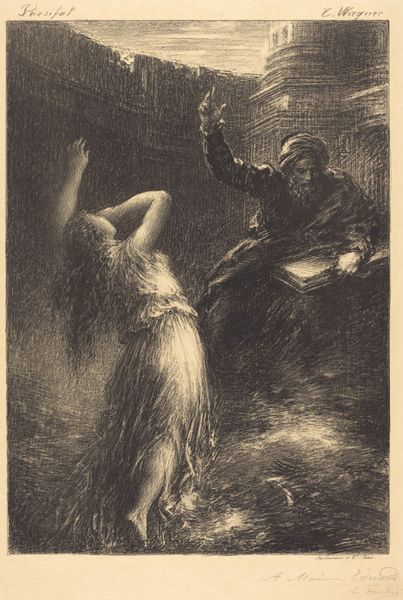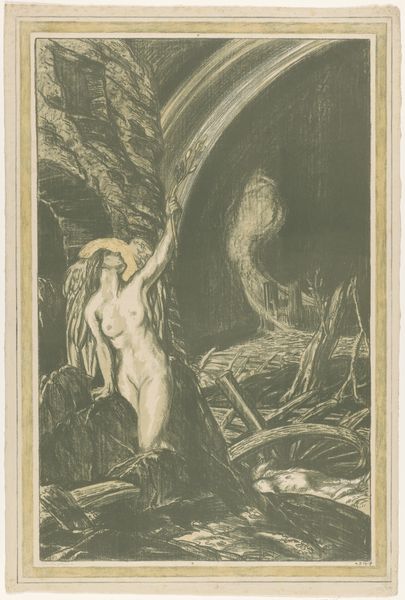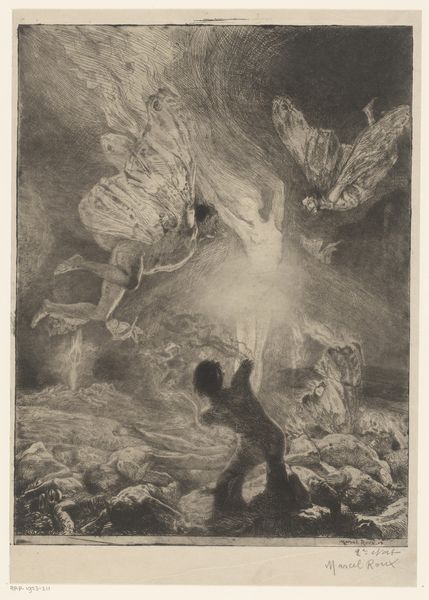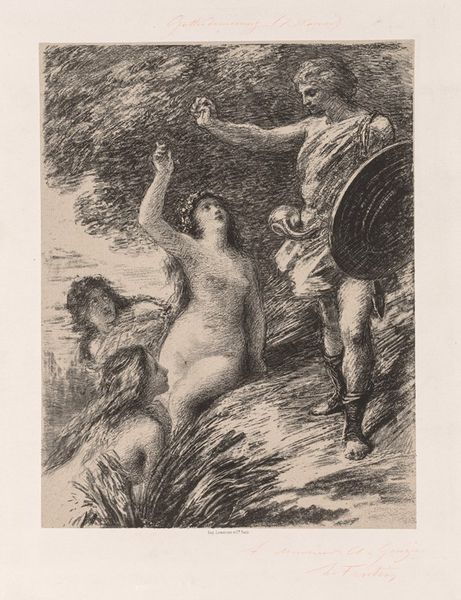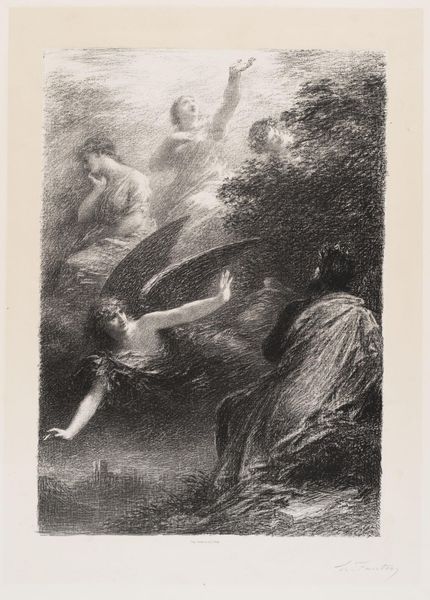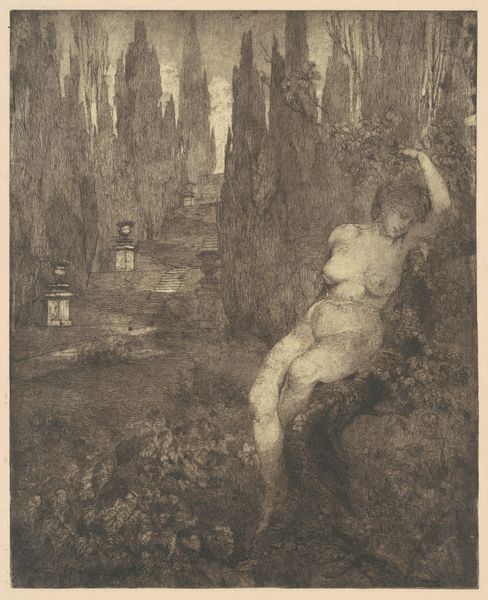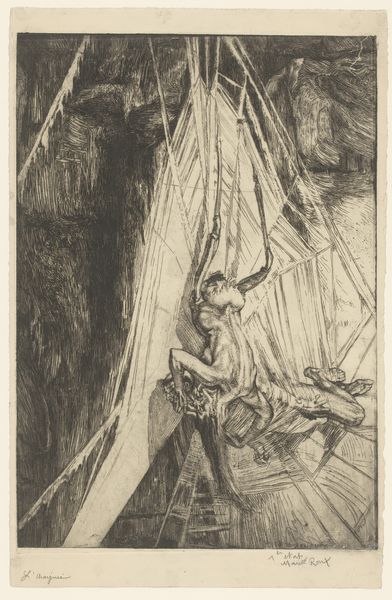
New Dreams of Happiness (from the series A Love) 1887 - 1903
0:00
0:00
drawing, print
#
pencil drawn
#
drawing
#
amateur sketch
#
toned paper
#
light pencil work
# print
#
pencil sketch
#
charcoal drawing
#
charcoal art
#
female-nude
#
pencil drawing
#
portrait drawing
#
pencil work
#
male-nude
#
angel
Dimensions: Plate: 17 13/16 × 13 11/16 in. (45.3 × 34.7 cm) Sheet: 22 1/16 × 15 15/16 in. (56 × 40.5 cm)
Copyright: Public Domain
Editor: This is "New Dreams of Happiness" by Max Klinger, created between 1887 and 1903. It looks like a print, maybe a drawing, featuring nude figures and an angel... There's something unsettling about the romanticism in it. What's your take on this work? Curator: The unease you feel is understandable. Klinger situates desire and longing within a landscape of power and societal constraints. Note the figures clinging to each other, almost desperately, while the angel figure – is it benevolent, or something more complex? Consider the late 19th century; rapid industrialization, evolving gender roles, and the burgeoning field of psychology all contributed to a sense of anxiety. How might Klinger be reflecting this unease? Editor: So, the figures' vulnerability reflects anxieties of the time, maybe anxieties around social upheaval? And the angel's ambiguity represents an uncertain future? Curator: Precisely! Klinger invites us to interrogate what happiness even *means* within these power structures. Who gets to experience it, and at what cost? The nude figures, while seemingly romantic, are also exposed, stripped bare—consider the relationship between nudity and vulnerability, visibility and agency, within the art historical canon. Editor: That’s a really insightful point. I was initially caught up in the romantic visuals but now I see a much more complex message. It's less about pure bliss and more about the *search* for happiness, shadowed by societal forces. Curator: Exactly. And art becomes a powerful tool for examining those shadows. It’s not about answers, but about prompting crucial questions about power, desire, and social realities. Editor: This makes me rethink how I see art from this period! Thanks. Curator: The pleasure is all mine. Now you can consider that these “dreams of happiness” were a topic to investigate beyond face value.
Comments
No comments
Be the first to comment and join the conversation on the ultimate creative platform.
